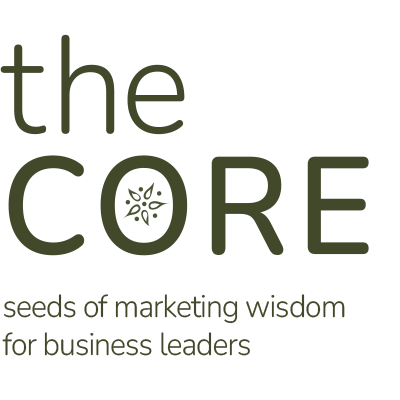Green Apple Strategy was founded as a full-service marketing agency built on the idea of serving clients differently. Rather than leading with marketing services, such as building a website or managing PR, we set out to be an agency that approached our work with a “business owner” mindset. Rather than thinking about marketing in its own silo, we wanted to come alongside our clients to strategically consider how marketing could impact their entire business—and alternatively, how other areas of their business impacted marketing. We wanted to be an agency that worked to build marketing strategies with the entire business in mind—not just the immediate marketing needs or sales goals.
This is one reason why “strategy” is intentionally included in our name. Whether it’s onboarding a new client or renewing our annual contract with an existing partner, the strategic planning process is an integral part of our approach and one of the primary ways we add value to our clients. We build our marketing plans with a focus on strategic planning and then develop our tactical approach from it. This has given us the opportunity to learn some important best practices when it comes to building a marketing strategy.
A Behind-the-Scenes Look at Our Approach to Building a Marketing Strategy
Here are a few best practices we’ve incorporated into our approach after crafting hundreds of marketing strategies over the past decade:
1. Make sure the right people are in the room as you build the strategy.
One of the dangers of building a marketing campaign in a silo is that the strategy isn’t aligned with the direction that sales is headed, or it ends up creating headaches for other areas of the business.
Developing your marketing strategy with input from important stakeholders is one of the keys to creating a plan that supports every area of the business. At Green Apple, we are passionate about getting the right people involved. It’s not helpful to work solely with the VP of Marketing when the CEO needs to sign off on the strategy. At the same time, we want to include people who might be impacted by the strategy and tactics.
Defining the right people depends on the unique characteristics of each company. Depending on who is making the decision and who will be impacted, we’ve worked alongside CEOs, COOs, CFOs, marketing leadership, and service-line managers to ensure our marketing strategies benefit the direction of the entire company.
2. Coordinate with key stakeholders to help them understand where marketing is going and collaborate around areas of impact.
Getting the right people in the room is one thing. Intentionally listening to their needs, thoughts, and questions is another. While we don’t expect a CFO or COO to understand everything about marketing or know specific best practices, we also recognize their perspective on how our strategy impacts their role is important.
Oftentimes, we’ll host a listening session as we share our initial thoughts and strategy with key stakeholders. We want their feedback because they all have different perspectives on the business. This coordination and collaboration allow marketing to hear updates that might be happening in other areas of the company. These insights can be important for finding your next marketing angle or designing a strategy that will truly move the business forward over the next year.
For example, if Operations is planning on rolling out a new product or service line—that’s a key tactic to consider. If a potential merger or acquisition is happening in the next year, that will drastically impact your marketing plan. Gathering as much information and perspective for where the entire organization is headed in the next year ensures marketing can fulfill its role and address the specific needs of the company—whether that’s brand management, sales-enablement, or enhancing the customer experience.
3. Set realistic expectations and goals based on what’s realistically possible.
Unless you are Amazon or another major Fortune 500 company, the resources and budget you can devote to marketing are limited. That’s important to remember as you build your marketing plan. It’s easy to get so caught up in the excitement of all the possible tactics and strategies that you forget what’s actually possible with the resources you have available.
That’s why it’s important to set appropriate expectations as you finalize your marketing strategy. You need to recognize everything that is going to be required to execute the strategy, including your budget, resources, and timeline.
Having this sort of honest and transparent conversation with clients has been one of the keys to our work at Green Apple. Over the years, we’ve worked with clients who only want us to develop a strategy they can execute internally. Other clients ask us to develop a strategy and then hire us to execute it. Because of our strategic emphasis and full-service capabilities, we’re able to provide value to both types of clients. We don’t rely on pushing a specific tactic or service. In every strategy session, we work with our clients to help them define the difference between what they should do or want to do and what they realistically can do.
4. Make sure stakeholders have a clear understanding of how marketing reaches your target audience.
One of our favorite parts in every strategy session is the moment when people realize how all of the marketing ideas and tactics work together to move their company forward. Whether it’s gaining clarity around their target audience or recognizing how all of the various marketing platforms create an omnichannel presence to reach today’s consumers, we love the “light bulb” moment when all the key stakeholders recognize the synergy a good marketing strategy can create.
For example, one of the ways we support clients is by gathering customer feedback and testimonials. This becomes helpful for improving areas of the business, but it also provides an opportunity to create “customer spotlights” the company can promote through blogs and social media. These customer spotlights also become valuable sales tools that the business development team can use in proposals or pitch meetings. By creating a throughline, we’re able to leverage one simple idea to improve multiple areas of the business.
5. Embrace the opportunity to learn and make adjustments as you go.
Recognizing potential changes and creating space to learn and adjust are key to developing an agile marketing strategy that can evolve throughout the year. A marketing strategy should help you set a direction, but it should also give you the ability to evolve and adapt. Our marketing strategies include a process of continual learning so that we can optimize what we’re doing throughout the year. We also plan for the unexpected so that we can pivot if there’s a new service line or business need that arises. We’re not afraid to deliver a marketing strategy and then come back a few months later after analyzing the results to say, “We’ve identified a better way to do this.”
Every marketing strategy should be developed with a long-term mindset that includes a process for looking at the data. We’re committed to changing directions if there is a more effective way to help the company succeed.
Work with Us to Build Your Next Marketing Strategy
At Green Apple, our competitive advantage lies in our approach to strategic planning. If you’re interested in learning more about our process or discussing the specific ways we can help you, feel free to reach out to our team.








 Marketing is constantly evolving and changing. Nowhere is that more true than in the world of digital marketing. What worked in the past becomes antiquated just a few years later. Even a tactic that worked last month might not be as effective. That’s why businesses in every industry need to stay informed on the trends and insights to develop an effective digital marketing strategy to reach their target audience.
Marketing is constantly evolving and changing. Nowhere is that more true than in the world of digital marketing. What worked in the past becomes antiquated just a few years later. Even a tactic that worked last month might not be as effective. That’s why businesses in every industry need to stay informed on the trends and insights to develop an effective digital marketing strategy to reach their target audience. 



